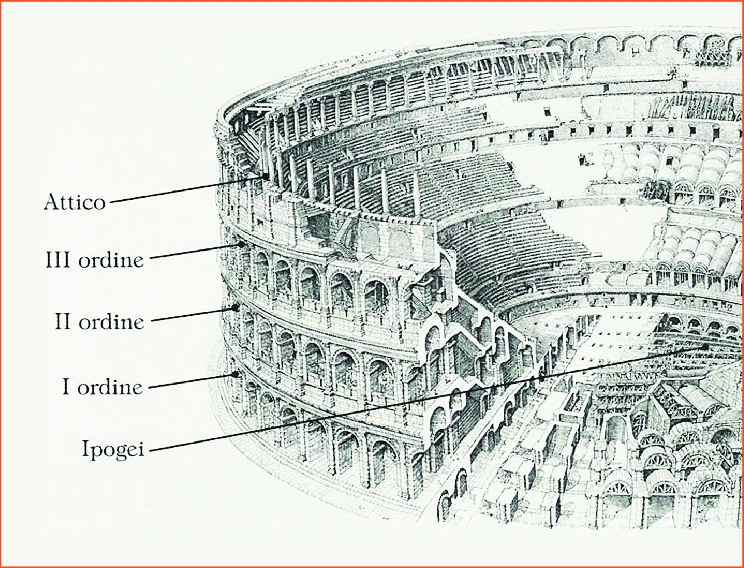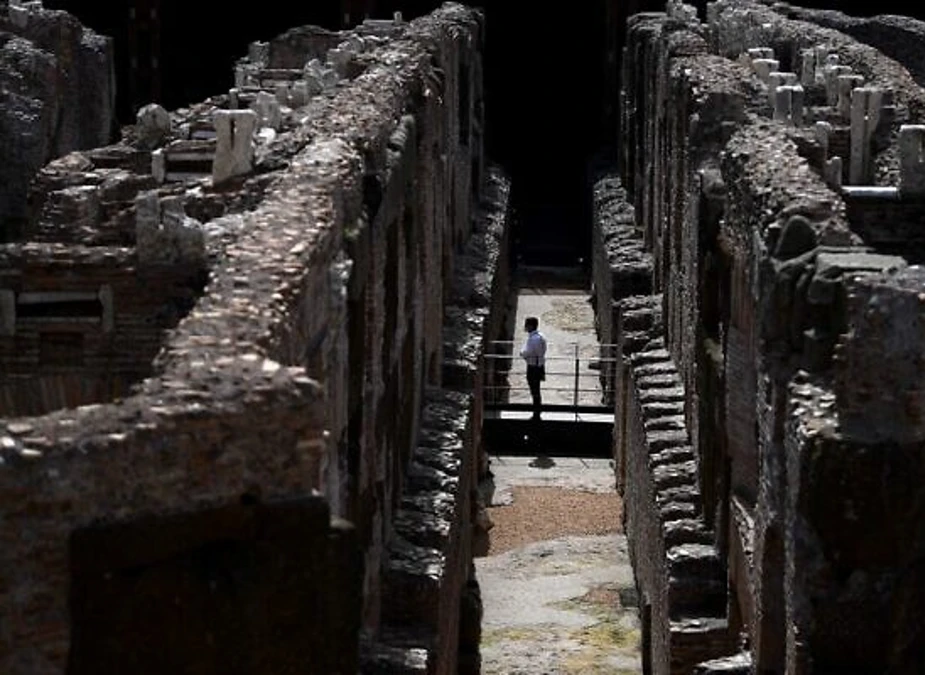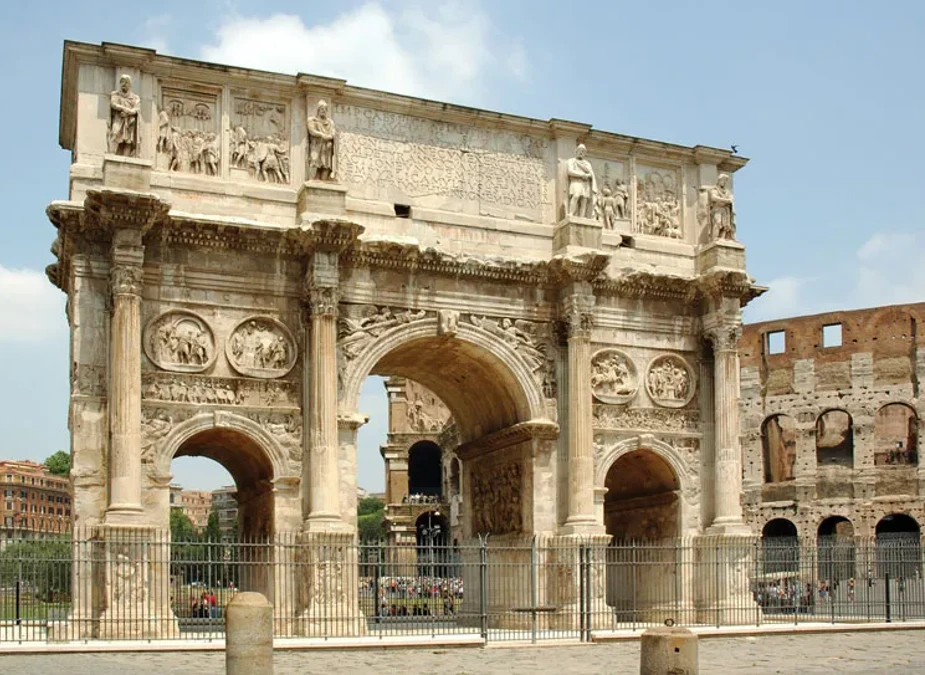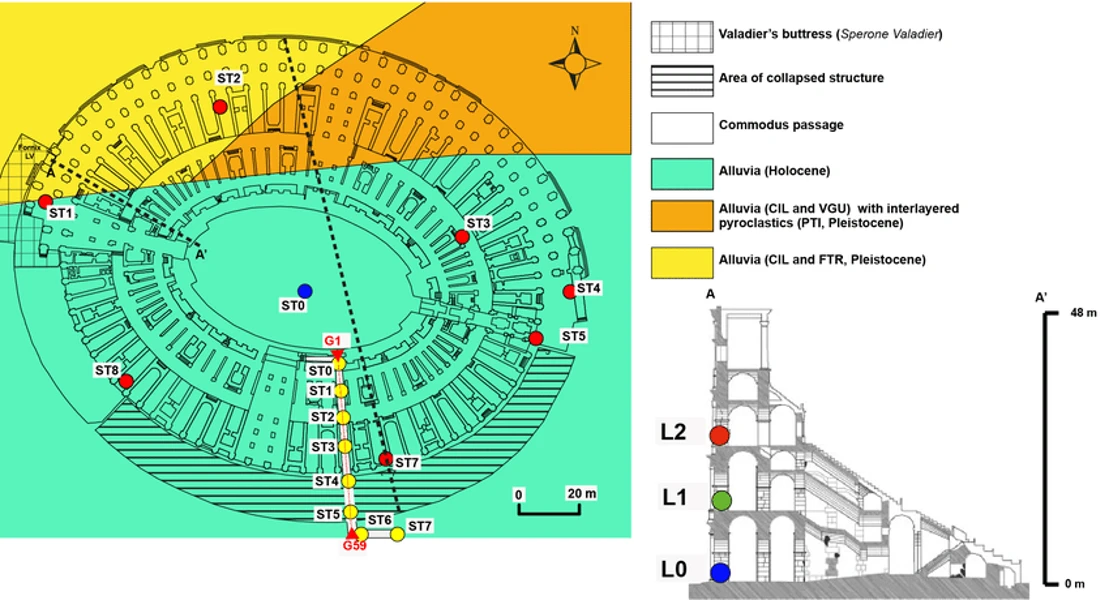Using a map may make navigating the Colosseum, a massive building with several stories and numerous parts, much easier. The map can help you better see the various regions and organize your exploration schedule, ensuring you don’t miss any important locations.
A map helps one understand each place’s layout and historical significance, from the access points to the several floors and important areas like the hypogea, cavea, and arena floor. Therefore, it is essential for a thorough and enriching journey, whether visiting the massive outside walls or the panoramic vistas from the top floors.
Why Do You Need A Map?
The Colosseum is a large building with several floors and parts. So, navigating the vast Colosseum requires a map to ensure you don’t miss important areas like the arena, exhibitions, underground Hypogeum, and seating sections. It is useful for figuring out where bathrooms and exits are, comprehending the layout’s historical background, and organizing your visit to make the most of your trip.
Colosseum Entrances
There are three entrances to the Colosseum, and each has a little distinct function:
Main Entrance (Porta Principale): This entrance, which faces the Roman Forum, is only open to those who have purchased tickets in advance.
Group Gate (Porta per Gruppi): This entryway, close to the Arch of Constantine, serves groups with reservations and specialized guides.
Stern Gate (Porta Libitinaria): This gate is located on the shorter axis of the Colosseum and was formerly used by gladiators and entertainers. It is currently closed to the general public.
Colosseum’s Levels

Imagine the Colosseum to be a massive, multi-tiered cake. Every layer reveals a different purpose and narrative, from the sky-reaching façade to the underground depths. This is an analysis of the map of the Colosseum.
Level 1
Walking via the entryway, you will be on Level 1, home to the toilets, security checks, and ticket office. Investigate Level 1’s Esquiline Exhibitions. These changing exhibitions feature historical artifacts and information on gladiatorial combat, the building of the Colosseum, and daily life in ancient Rome. Find the ramps that go up to the cavea or sitting spaces. These numbered ramps lead to designated sitting areas within the cavea.
The Hypogea (Underground/Level 1)

The hypogea is a complex network of passageways, rooms, and cages. It was a busy backstage space, essential to the shows held in the Colosseum.
Location: Located beneath the arena floor.
Note: Access to the hypogea is highly limited because of safety and preservation considerations. However, a few guided trips, like the Underground Colosseum Tour, provide a unique window into this subterranean realm.
Exterior Walls
The Colosseum’s grandeur is due to its three layers of exterior walls, which are decorated with intricate arches and engaged columns in the Doric, Ionic, and Corinthian styles. Openings located within the arches, also used for ventilation and light penetration, provided additional escape possibilities for spectators.
Location: From the ground level, you can observe the fine details.
Levels 2 to 4
The views improved as you ascended from level 2 to level 4 of the cavea. They provide breathtaking panoramic views of the Colosseum and the Roman Forum below. You can access these lower-class levels with ramps and numbered seating arrangements.
Cavea (Seating Area)
The cavea rises in levels like a set of concentric rings. The seating area is visible from nearly every direction.
Each tier was divided horizontally to create vomitoria, or exits, and effectively manage crowds. The emperor sat in a sumptuous box at the lowest level (ima cavea), followed by senators, citizens, women, and plebeians (commoners) at the highest level. Note the wall’s architectural features, especially the seating arrangement’s numbered system, which assisted visitors in finding their seats.
Location: You can see the upper cavea levels as you navigate the ramps that go through the inside of the Colosseum.
Vomitoria (Exits)
Following performances, these acted as quick exit points, facilitating the large-scale audiences’ efficient departure from the Colosseum. Although there are no longer designated routes for tourists, knowing where they are aids in visualizing the crowd dynamics and evacuation plans at the time.
Location: Numerous arched passageways called vomitoria stretch out from the cavea.
Arena Floor
The arena floor was a large, circular area covered in sand. Subsequently, a convoluted system of tunnels and rooms known as hypogea was constructed beneath it.
Location: From the entrance, you can see steps and ramps. Climb these upwards around the elliptical core of the Colosseum. The higher your seating tier, the more stairs you will ascend.
Note: The arena floor is not directly accessible. You should have an Arena ticket to see its size and historical significance.
Upper Levels (Optional—Levels 3 & 4)
Depending on your ticket and physical restrictions, you can explore the upper floors of the cavea (floors 3 and 4). While the lower classes were seated in less comfortable positions in these areas, the views of the whole Colosseum and the Roman Forum around it were breathtaking.
Key Areas
Let’s examine some of the Colosseum map’s most important locations in more detail:
Entrance Gates
The Colosseum had 70 numbered entrances to prevent overcrowding. A particular numbering system was intended to guide various socioeconomic groups to the appropriate seating sections within the caveat. But the original numbering scheme is not completely apparent now.
Location: They were arranged in a ring-like pattern around the base (level 1) of the Colosseum.
Arches of Triumph

These colossal arches, especially the Arch of Constantine by the Colosseum, functioned as triumphant emperors’ entrances upon their return from war.
Location: Although they are not a part of the Colosseum, they are located nearby.
Tribunes
Elevated platforms were stuck out from the cavea to seat nobles and officials. The ornate imperial tribune provided the emperor with a good viewing position.
Location: Located on the west side of the cavea facing the arena floor.
Wooden Awnings (Velarium)
The velarium was a retractable fabric canopy that covered the cavea and was a wonder of Roman engineering. Using an intricate pulley system, sailors operated it and protected onlookers from the sun and rain.
Location: The velarium’s actual construction is no longer in place, but its anchor points are still visible on the Colosseum’s external walls.
Gladiatorial Schools (Ludus)
The gladiatorial schools were the adjacent training grounds, which were very important to the games. Many gladiatorial schools were close to the Colosseum. The most well-known one, Ludus Magnus, was situated just east of the Colosseum. Other schools were nearby, such as the Dacian and Gallic schools, Ludus Matutinus (school for animal warriors), etc., with Ludus Magnus being better preserved than these.
Vacatis Tips to Navigate the Map
- Follow the signs or look at the assigned ramp number on your ticket to find the ramps to the cavea.
- The Colosseum has few accessible entrances. Although some top floors are accessible via elevators, exploring the hypogea or arena floor may be challenging.
- Level 1 has a bookshop, restrooms, and a cloakroom.
- You may obtain a map of the Colosseum from the entry or download one. Learn the layout of important sections such as the arena floor, vomitoria (exits), and cavea (seating).
- Senators and other authorities had the greatest views from the lowest floors (ima cavea).
- Elevated tiers (summa cavea) offered magnificent sweeping vistas of the Roman Forum and the Colosseum but were reserved for ladies and commoners.
Contents
FAQs
1. How many floors does the Colosseum have?
When public access areas are considered, it has four levels: the ground floor, the two major sitting tiers, and the underground level.
2. Can I explore the Colosseum without a map?
Exploring the Colosseum without a map is possible, although doing so will restrict your experience. But you might not notice little features, find it challenging to move between levels, and have trouble understanding its historical significance. A map lets you explore more deeply.
3. Are there elevators in the Colosseum?
The elevators are mostly used to access higher cavea (seating) levels. Due to access limitations, exploring the hypogea (tunnels) or the arena floor may require stairs.
4. Where is the bookshop located in the Colosseum?
There are three Mondadori Electa bookstores in the Colosseum. Two are easily located close to the entrance on Level 1. The second level is where you may find the third one.
5. How do I navigate the ramps to the cavea in the Colosseum?
Once you’re inside the Colosseum, find the ramps with the numbers. Locate your ramp number by looking for signs or by consulting your ticket. You’ll gain elevation as you go up these ramps, giving you views of the top cavea levels and the arena floor.
6. Where can I get a map of the Colosseum?
Upon arrival, you can download the map or pick one up from the entrance kiosk.
